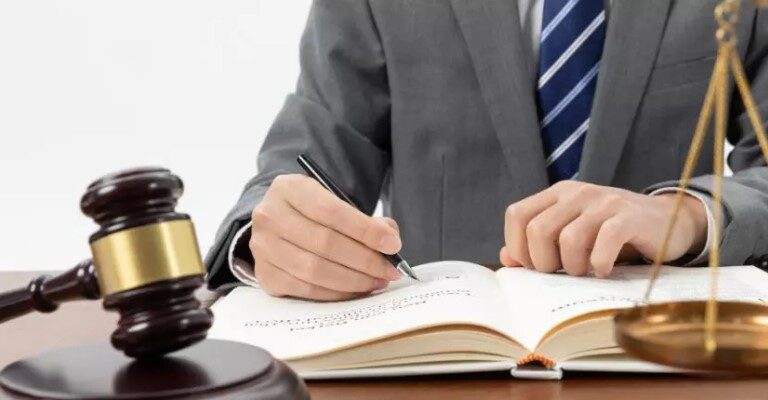Table of Contents
ToggleIntroduction
Overview of a Suspended License
Having your driver’s license suspended can feel like a personal crisis. This suspension means you’re legally barred from driving, which can impact everything from your daily commute to your job. In this article, we’ll walk you through everything you need to know about getting your suspended license reinstated, including the steps you need to take and common pitfalls to avoid.
Importance of Reinstating Your License
Getting your license reinstated isn’t just about legal compliance; it’s also about restoring your independence and mobility. Driving without a license can lead to further legal troubles, fines, or even jail time. Plus, having your license reinstated can relieve stress and help you regain control over your personal and professional life.
Types of License Suspensions
Administrative Suspensions
Administrative suspensions are typically enforced by the Department of Motor Vehicles (DMV) for reasons such as failure to pay fines or insurance lapses. The duration of these suspensions varies based on the nature of the infraction. For example, failing to renew your registration on time can lead to a short-term suspension, while more severe issues like multiple DUIs may result in longer suspensions.
Court-Ordered Suspensions
Court-ordered suspensions arise from legal proceedings. These might include penalties for criminal offenses like a DUI, or even civil matters like failing to pay child support. The terms of these suspensions are determined by the court and can include specific conditions such as attending counseling or community service.
Voluntary Suspensions
Sometimes, drivers choose to voluntarily suspend their licenses. This could be due to personal reasons, such as financial hardship or health issues. Voluntary suspensions can have different implications and reinstatement processes compared to other types of suspensions.
Causes of License Suspension
Traffic Violations
Traffic violations are one of the most common causes of license suspension. Major infractions such as DUI/DWI, excessive speeding, and reckless driving can lead to immediate suspension and a complex reinstatement process. Understanding these violations and their consequences is crucial for avoiding them in the future.
Unpaid Fines and Fees
Failure to pay fines and fees, such as those from traffic tickets or court orders, can result in your license being suspended. It’s essential to address any outstanding fines promptly to prevent or resolve a suspension.
Failure to Appear in Court
Missing a court date can trigger a license suspension. This often happens in cases related to traffic violations or other legal matters. If you’ve missed a court appearance, it’s important to reschedule and address the issue as soon as possible to avoid further complications.
Accumulation of Points
Most states use a points system to track traffic violations. Accumulating too many points can lead to a suspension. Each violation adds points to your record, and once you reach a certain threshold, your license may be suspended.
Insurance Issues
Driving without insurance or having issues with your insurance coverage can lead to a suspended license. Insurance requirements vary by state, but maintaining valid coverage is essential for keeping your license in good standing.
How to Check if Your License is Suspended
Online Verification
Most states offer online services to check your license status. This can be done through the DMV website or other authorized third-party services. Checking online is a quick way to find out if your license is suspended and understand the next steps.
Contacting the DMV
If you prefer a more personal approach, you can contact the DMV directly. Be prepared to provide your personal information, such as your driver’s license number and Social Security number, to verify your identity and obtain your license status.
Checking Court Records
In some cases, especially with court-ordered suspensions, checking court records might be necessary. Accessing court records can help you understand the specific reasons for your suspension and any related legal obligations.
Steps to Reinstate a Suspended License
Pay Outstanding Fines and Fees
The first step to reinstating your license is to clear any outstanding fines or fees. This includes traffic tickets, court fines, and any other financial obligations. Payment can usually be made online, by mail, or in person at a DMV office.
Complete Required Courses or Programs
Depending on the reason for your suspension, you might need to complete certain courses or programs. For instance, if your license was suspended due to a DUI, you may be required to attend a DUI education program. Enroll in and complete these programs as directed to meet reinstatement requirements.
Obtain SR-22 Insurance
In many cases, you’ll need to obtain SR-22 insurance, a special type of insurance required for high-risk drivers. SR-22 insurance serves as proof of financial responsibility and is typically required after certain offenses. Contact an insurance provider to get SR-22 coverage and provide the necessary documentation to the DMV.
Resolve Legal Issues
If your suspension is related to legal issues, such as unpaid court fines or missed hearings, you’ll need to resolve these matters first. Attend any required court hearings, pay fines, and fulfill any other legal obligations to clear your record and move forward with reinstatement.
Provide Proof of Compliance
Once you’ve met all the requirements, you’ll need to provide proof of compliance to the DMV. This includes documents such as proof of insurance, course completion certificates, and any other required paperwork. Submit these documents as directed by the DMV.
Pass Required Tests
Depending on the nature of your suspension, you may be required to pass certain tests, such as a written or practical driving test. Prepare for these tests by reviewing relevant materials and practicing your driving skills.
Request a Reinstatement Hearing
In some cases, you may need to request a reinstatement hearing. This is an opportunity to present your case and demonstrate that you have met all the requirements for reinstatement. Schedule the hearing with the DMV or relevant court and be prepared to provide any necessary documentation or evidence.
Common Pitfalls in the Reinstatement Process
Misunderstanding Requirements
One common pitfall is misunderstanding the requirements for reinstating your license. Each type of suspension has its own set of rules and procedures, so it’s important to carefully review and follow all instructions to avoid delays.
Delays in Processing
Processing times for reinstatements can vary, and delays can occur. To minimize delays, ensure that all required documents are submitted promptly and that you follow up with the DMV or court as needed.
Incomplete Documentation
Submitting incomplete or incorrect documentation can lead to further delays or complications. Make sure to double-check all forms and documents before submission to ensure that everything is complete and accurate.
Tips for Preventing Future Suspensions
Stay Informed About Your License Status
Regularly check your license status to ensure that it remains in good standing. Staying informed can help you address any issues before they lead to a suspension.
Avoid Traffic Violations
Practice safe driving and adhere to traffic laws to avoid violations that could lead to a suspension. Being mindful of your driving habits and staying updated on traffic regulations can help you maintain a clean driving record.
Manage Fines and Fees Promptly
Address any fines or fees as soon as possible to prevent them from accumulating and potentially leading to a suspension. Set up payment plans if necessary and make timely payments to keep your license in good standing.
Legal Assistance
When to Seek Legal Help
If you’re facing complex legal issues related to your license suspension, such as challenging a court order or dealing with multiple offenses, it may be beneficial to seek legal assistance. A lawyer can help you navigate the legal process and work towards resolving your issues.
Finding a Reputable Attorney
To find a reputable attorney, research lawyers who specialize in traffic law or license reinstatement. Look for reviews and recommendations, and ask potential attorneys about their experience and success rates.
Costs of Legal Assistance
Legal assistance can be costly, so it’s important to understand the fees involved. Discuss payment options and plans with your attorney to ensure that you can manage the costs effectively.
Personal Stories and Case Studies
Case Study 1: Successful Reinstatement After DUI
John, a recent DUI offender, successfully reinstated his license by completing a DUI education program, obtaining SR-22 insurance, and fulfilling all court requirements. His proactive approach and careful adherence to the reinstatement process allowed him to regain his driving privileges.
Case Study 2: Overcoming Administrative Suspension
Maria faced an administrative suspension due to unpaid traffic fines. She resolved the issue by paying off her fines, completing a defensive driving course, and submitting all required documentation. Her diligence in following the reinstatement procedures led to a successful reinstatement of her license.
Expert Insights
Advice from DMV Officials
DMV officials often emphasize the importance of understanding and following the specific requirements for your type of suspension. They recommend keeping thorough records of all communications and submissions to avoid potential issues.
Legal Expert Opinions
Legal experts advise that addressing issues promptly and seeking professional guidance when needed can significantly impact the success of your reinstatement process. They also stress the importance of compliance with all legal obligations and requirements.
Conclusion
In summary, reinstating a suspended license involves understanding the type of suspension, following specific reinstatement procedures, and avoiding common pitfalls. By paying fines, completing required courses, obtaining necessary insurance, and providing proof of compliance, you can work towards regaining your driving privileges.
If you’re dealing with a suspended license, take the necessary steps to address the issue and seek help if needed. Stay informed about your rights and responsibilities, and don’t hesitate to consult with legal professionals or DMV officials to ensure a smooth reinstatement process.
3.5

